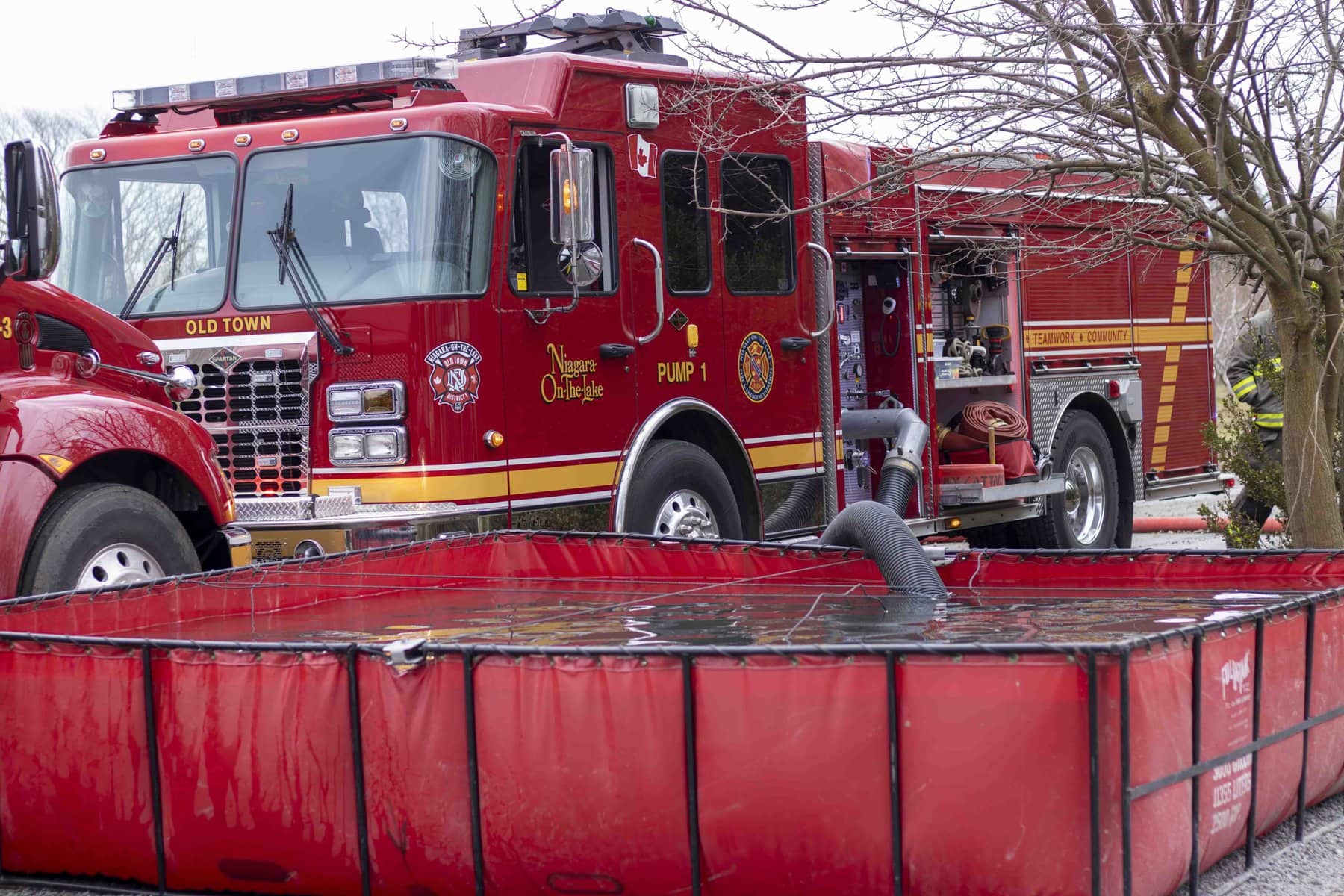With its many farms and wineries, Niagara-on-the-Lake is a town with deep agricultural roots.
And with that comes the risk of fires that threaten buildings, livestock and the livelihoods of farmers.
In Niagara-on-the-Lake, firefighters can face numerous challenges when it comes to fighting rural fires.
“In rural areas in general … a water source is the first thing we think of,” said fire chief Jay Plato.
With that in mind, the town invested in two new tankers two years ago — at a cost of $425,000 each — for the volunteer department. The trucks were delivered in 2023.
The trucks help out immensely in places where there are no hydrants available.
Such was the case for a fire earlier this year at a rural property at Lakeshore Road and Firelane 13.
One of the new tankers and portable water pond were deployed to ensure firefighters had what they needed to conquer the blaze.
The added tankers were necessary, given NOTL’s mix of urban and rural areas.
Sometimes, the department can rely on help from nearby crews in Niagara Falls and St. Catharines but neither of those, however, have a pumper available that is close enough.
“The closest one would be coming from Thorold and that is far,” Plato said.
According to the latest statistics available from the Ontario Office of the Fire Marshal, there were 152 barn fires in the province in 2021, causing just over $54 million in damages.
In NOTL, converted barns are more of a problem than those still being utilized for agriculture, Plato said.
“That’s a bigger concern. We had a pretty big fire (on a former chicken farm) where the barn had been converted to storage.”
The fire Plato referenced took place at three converted barns that housed several businesses back in 2021.
A faulty electrical system was found to be the cause of the blaze, which caused $2.5 million in damage.
Other challenges in situations involving rural fires can be access for firefighters.
“Fire lanes can be tricky to get down,” he said.
To raise awareness of the issue of barn fires, the Ontario Federation of Agriculture has embarked on a campaign with the Ontario Association of Fire Chiefs highlighting the importance of fire safety and prevention.
As a part of the campaign, the federation hopes to have members from local fire departments join organizational representatives at farm shows across the province to engage directly with farmers about how to protect their farm buildings and livestock.
“Fire is an ever-present but preventable threat for Ontario farmers and we appreciate being able to promote and share resources about what can be done to minimize those risks to keep people, animals and buildings safe,” said Drew Spoelstra, Binbrook farmer and the agriculture federation’s president.
However, NOTL does not have a program specifically tailored to farms, Plato said.
Very few farms in town, he said, are of the variety where livestock is front and centre.
“We have the vineyards, we have orchards,” Plato said. “We don’t have a lot of animal farms where there is livestock.”
Instead, the department approaches fire safety by conducting risk assessments for different areas in town.
Using the Old Town district as an example, a fire on Queen Street could have catastrophic consequences.
“Losing Queen Street could be devastating,” he said, adding that tourism contributes a lot to the local economy.
He counts the town as being fortunate because large barn fires are few and far between.
“We’re fortunate we haven’t had a lot of huge farming properties that have had issues,” Plato said.










